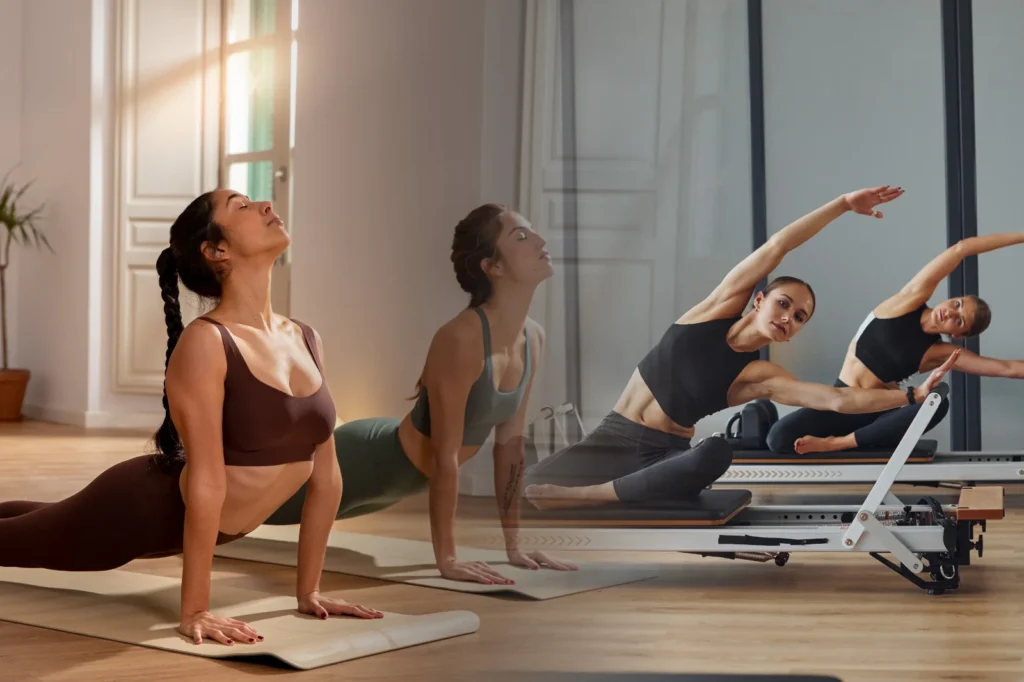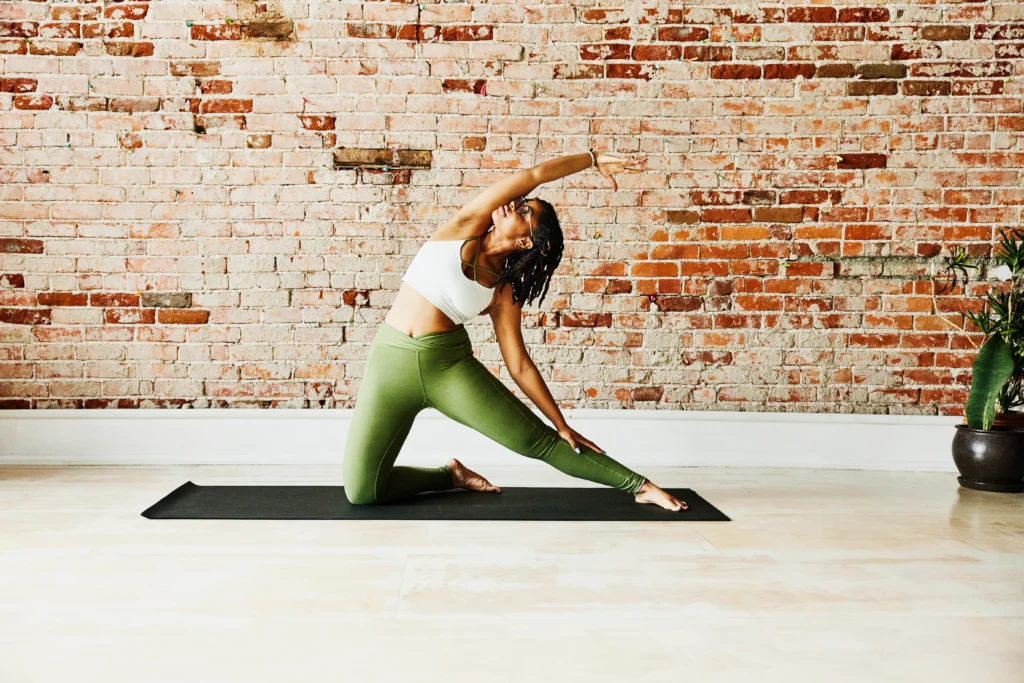
Elevate Your Wellness: Pilates or Yoga? The 2025 Blueprint
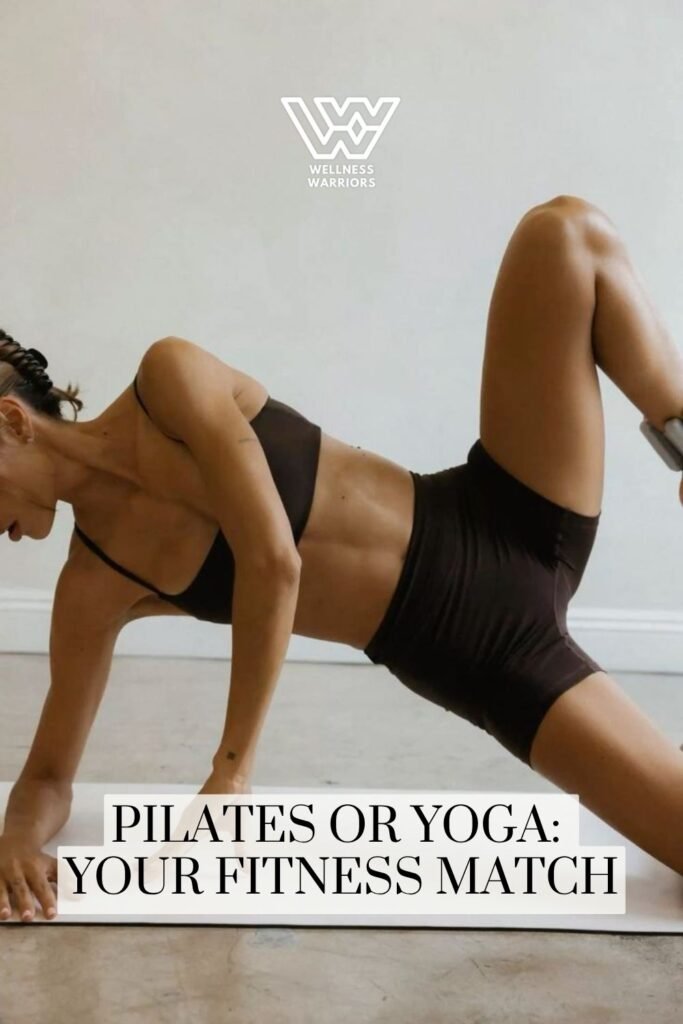
In the realm of wellness and fitness, two practices have gained significant popularity over the years: Pilates and Yoga. Both are renowned for their ability to improve physical and mental well-being, but they have distinct origins, philosophies, and approaches. This comprehensive article will delve into the definitions, differences, benefits, and practices of Pilates and Yoga, providing you with a detailed understanding of these two powerful disciplines.
Definitions and Origins
Pilates
Pilates is a form of exercise developed by Joseph Pilates in the early 20th century. Born in Germany in 1883, Joseph Pilates suffered from various ailments as a child, which led him to develop a keen interest in physical fitness.
He created a system of exercises that focused on strengthening the core, improving posture, and enhancing overall body awareness. Pilates is a low-impact workout that emphasizes controlled movements, proper alignment, and breath work. It aims to develop what Joseph Pilates called the “powerhouse” – the abdomen, lower back, hips, and buttocks. This method of exercise is designed to improve flexibility, build strength, and develop control and endurance in the entire body.
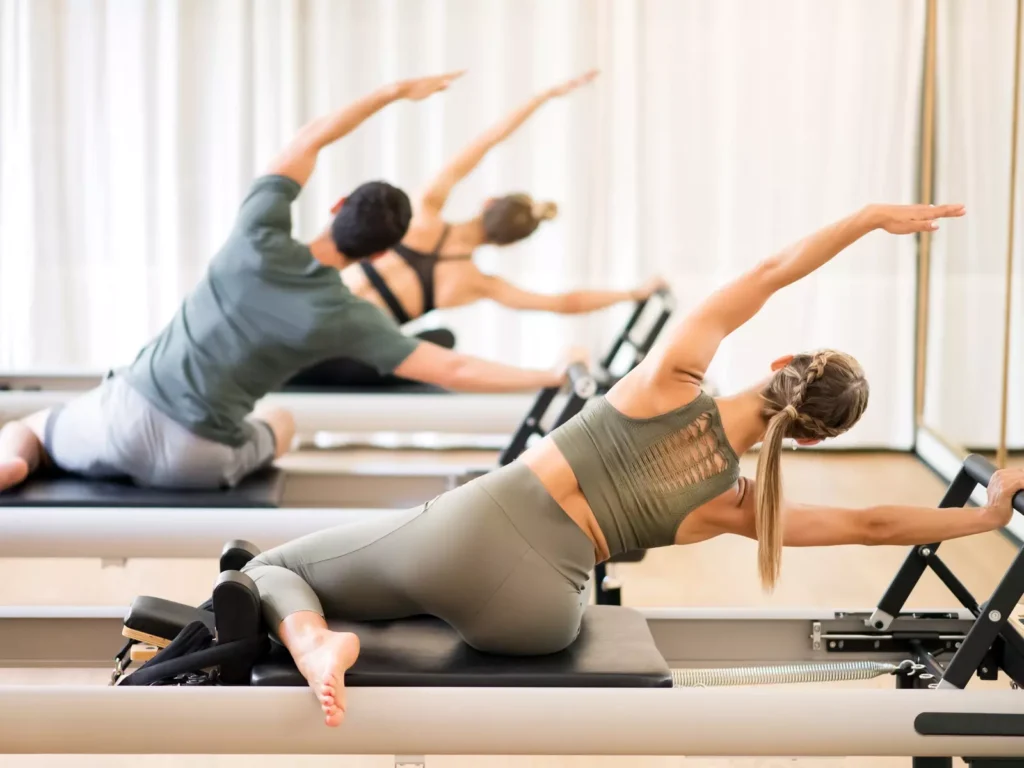
Yoga
Yoga, on the other hand, is an ancient practice that originated in ancient India. It is a holistic discipline that encompasses physical postures (asanas), breathing techniques (pranayama), meditation, and philosophical principles.
The word “yoga” comes from the Sanskrit root “yuj,” which means “to join” or “to unite,” reflecting its aim to unite body, mind, and spirit.There are many different types of yoga, each with its own focus and style.
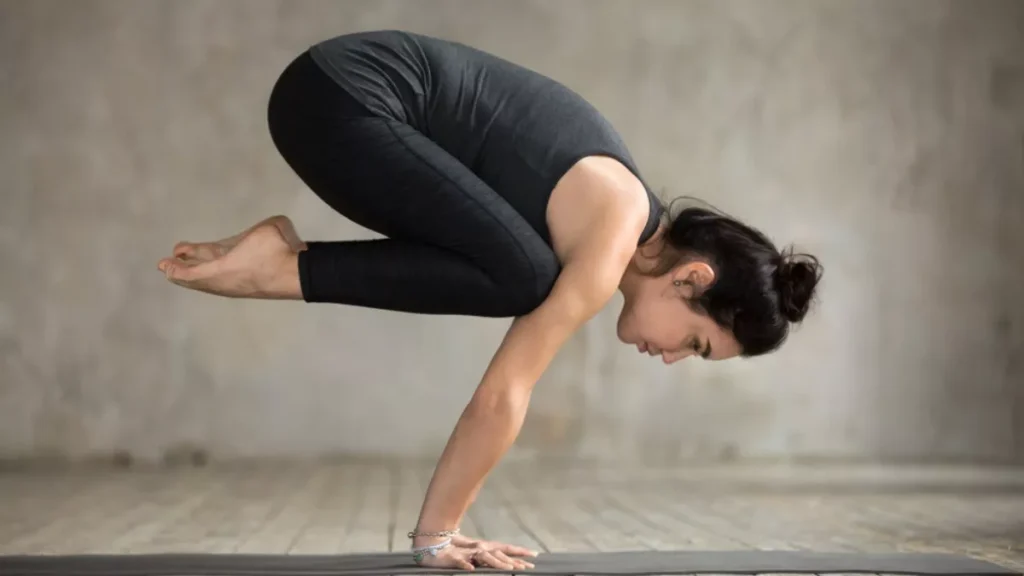
Some of the most popular forms include:
1. Hatha Yoga: A gentle, slow-paced style that focuses on basic poses and breath work.
2. Vinyasa Yoga: A more dynamic style that links breath with movement in a flowing sequence.
3. Ashtanga Yoga: A rigorous, physically demanding practice that follows a specific sequence of poses.
4. Iyengar Yoga: A style that emphasizes precise alignment and the use of props.
5. Bikram Yoga: A series of 26 poses practiced in a heated room.
6. Restorative Yoga: A relaxing style that uses props to support the body in passive poses.
7. Yin Yoga: A slow-paced style that holds poses for longer periods to target connective tissues.
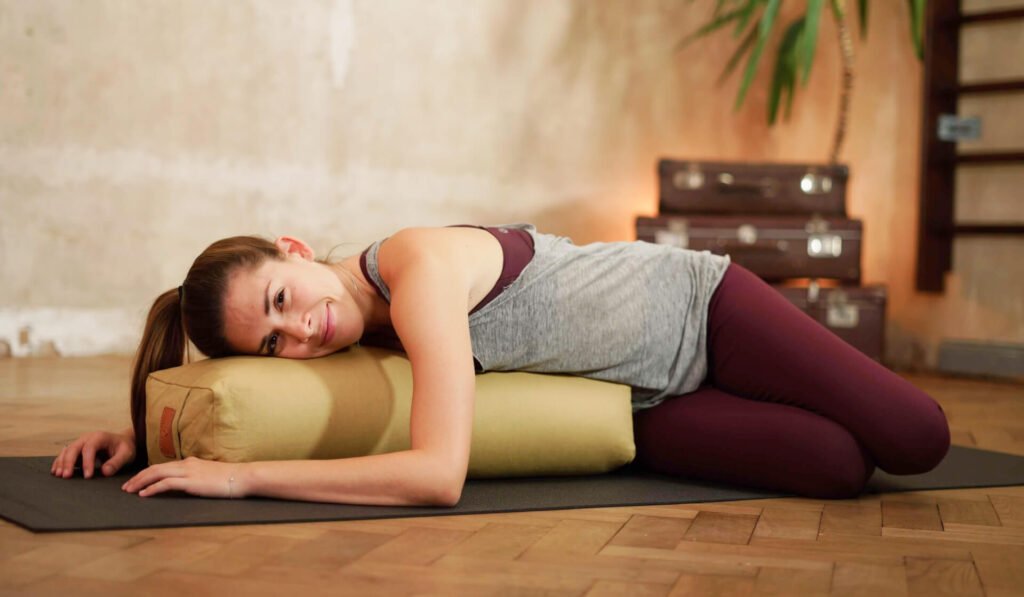
Main Differences
While both Pilates and Yoga offer numerous benefits for physical and mental health, there are several key differences between the two practices:
1. Focus: The main difference lies in their primary focus. Pilates primarily emphasizes core strength, posture, and overall body alignment. Yoga, while also addressing these aspects, places a greater focus on flexibility, balance, and the mind-body connection.
2. Origin and Philosophy: Pilates is a relatively modern practice developed as a physical fitness system. Yoga, however, is an ancient spiritual practice with roots in Indian philosophy, incorporating elements of meditation and mindfulness.
3. Breathing Techniques: Both practices emphasize breath work, but in different ways. Pilates focuses on lateral breathing, which involves expanding the ribcage while keeping the abdominal muscles engaged. Yoga incorporates various breathing exercises (pranayama) that are often practiced separately from the physical postures.
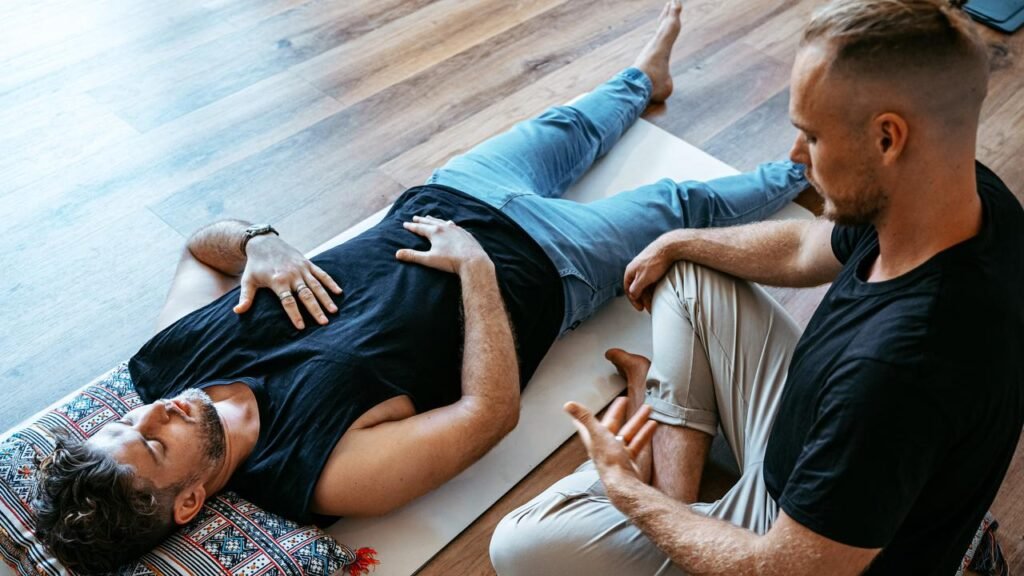
4. Movement Styles: Pilates movements are often performed in a specific sequence, with a strong emphasis on control and precision. Yoga poses can be practiced in various sequences or held for longer periods, depending on the style.
5. Equipment: While both can be practiced with just a mat, Pilates often incorporates specialized equipment such as the Reformer, Cadillac, and resistance bands. Yoga typically requires only a yoga mat, though props like blocks and straps may be used.
6. Spiritual Component: Yoga has a strong spiritual aspect, often incorporating meditation and chanting. Pilates, while promoting mind-body awareness, does not have an explicit spiritual component.
7. Variety of Styles: Yoga offers a wide range of different styles and practices, from gentle restorative yoga to physically demanding power yoga. Pilates, while having some variations (such as mat Pilates and reformer Pilates), generally follows a more consistent approach.
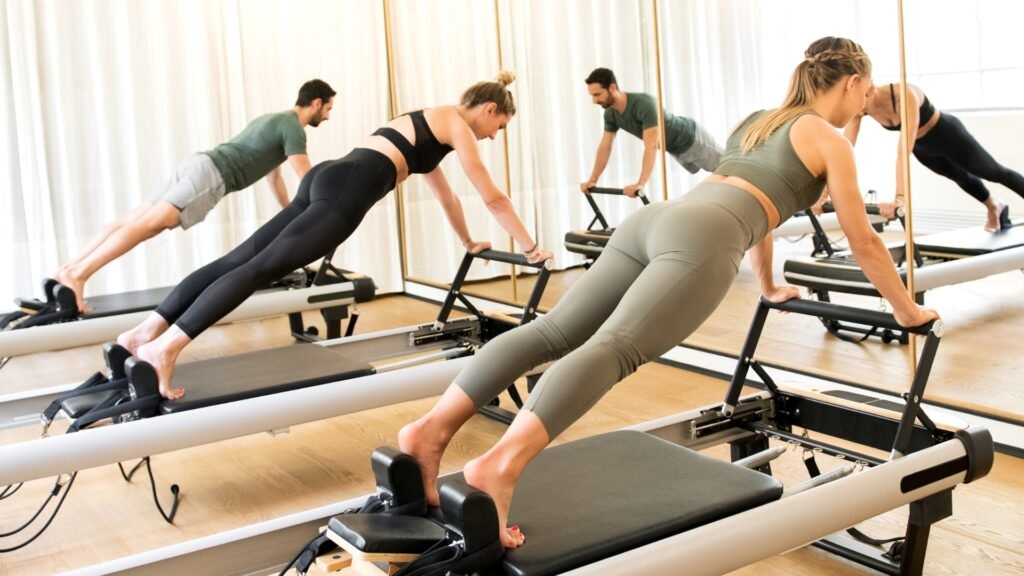
Learn more about what is Yoga?
Benefits
Both Pilates and Yoga offer numerous benefits for physical and mental health. Here’s a detailed look at the advantages of each practice:
Benefits of Pilates
1. Core Strength: Pilates is renowned for its ability to strengthen the core muscles, including the abdominal muscles and pelvic floor. This leads to improved posture and reduced lower back pain.
2. Improved Flexibility: Regular Pilates practice can significantly increase flexibility and range of motion throughout the body.
3. Better Posture: By focusing on alignment and core strength, Pilates helps correct postural imbalances and promotes better body awareness.
4. Muscle Tone: Pilates exercises target specific muscle groups, leading to improved muscle tone and definition.
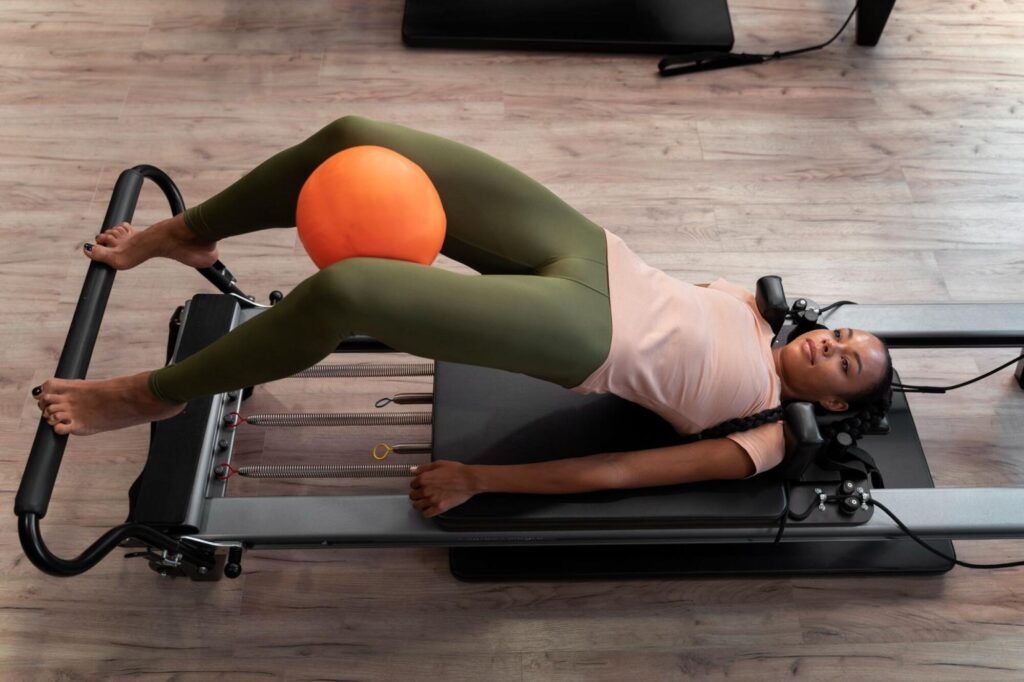
5. Low-Impact Workout: As a low-impact form of exercise, Pilates is gentle on the joints while still providing an effective full-body workout.
6. Enhanced Balance and Coordination: The controlled movements in Pilates help improve balance and body control.
7. Injury Prevention: By strengthening the core and improving overall body awareness, Pilates can help prevent injuries in daily life and other physical activities.
8. Stress Relief: The focus on controlled breathing and mindful movement in Pilates can help reduce stress and promote relaxation.
9. Improved Athletic Performance: Many athletes incorporate Pilates into their training regimens to enhance their performance in their respective sports.
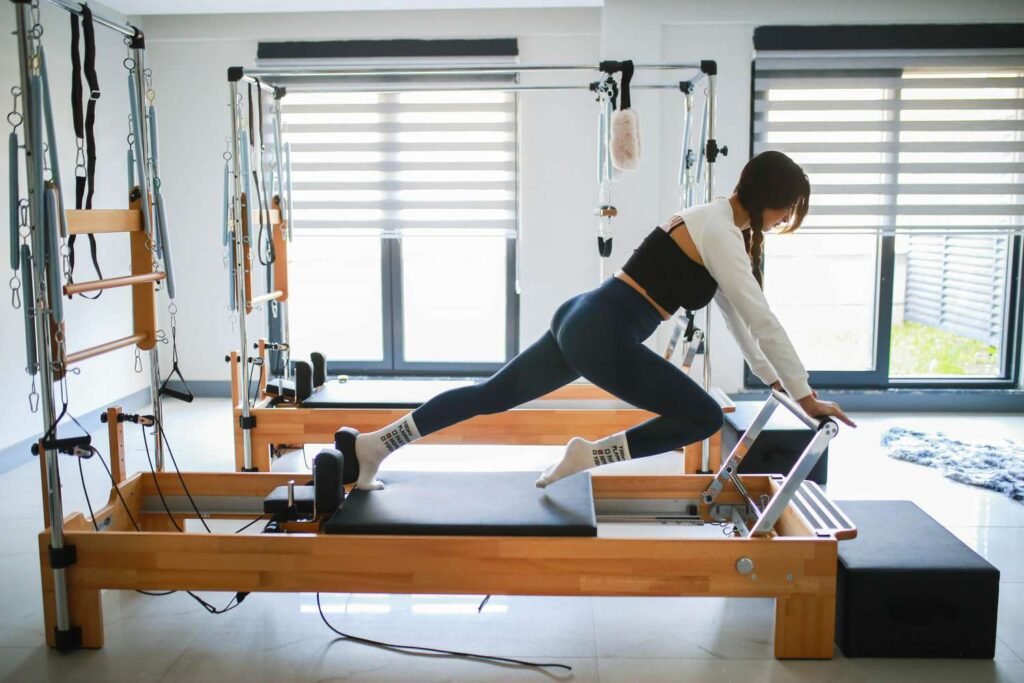
Benefits of Yoga
1. Flexibility: Yoga is well-known for its ability to increase flexibility and range of motion through various poses and stretches.
2. Strength: Many yoga poses require supporting your body weight, which builds strength in various muscle groups.
3. Stress Relief: The combination of physical postures, breathing exercises, and meditation in yoga is highly effective for reducing stress and promoting relaxation.
4. Improved Mental Health: Regular yoga practice has been shown to reduce symptoms of anxiety and depression, promoting overall emotional health.
5. Better Posture and Body Awareness: Yoga emphasizes proper alignment and body awareness, leading to improved posture in daily life.

6. Enhanced Balance: Many yoga poses challenge and improve balance, which is particularly beneficial as we age.
7. Cardiovascular Health: Certain types of yoga, such as power yoga or vinyasa flow, can provide a cardiovascular workout and may help lower blood pressure.
8. Weight Management: While not typically considered a weight loss exercise, regular yoga practice can support weight management by increasing body awareness and reducing stress-related eating.
9. Improved Sleep: The relaxation techniques learned in yoga can help improve sleep quality and duration.
10. Mindfulness and Meditation: Yoga incorporates mindfulness and meditation practices, which can improve focus, concentration, and overall mental well-being.
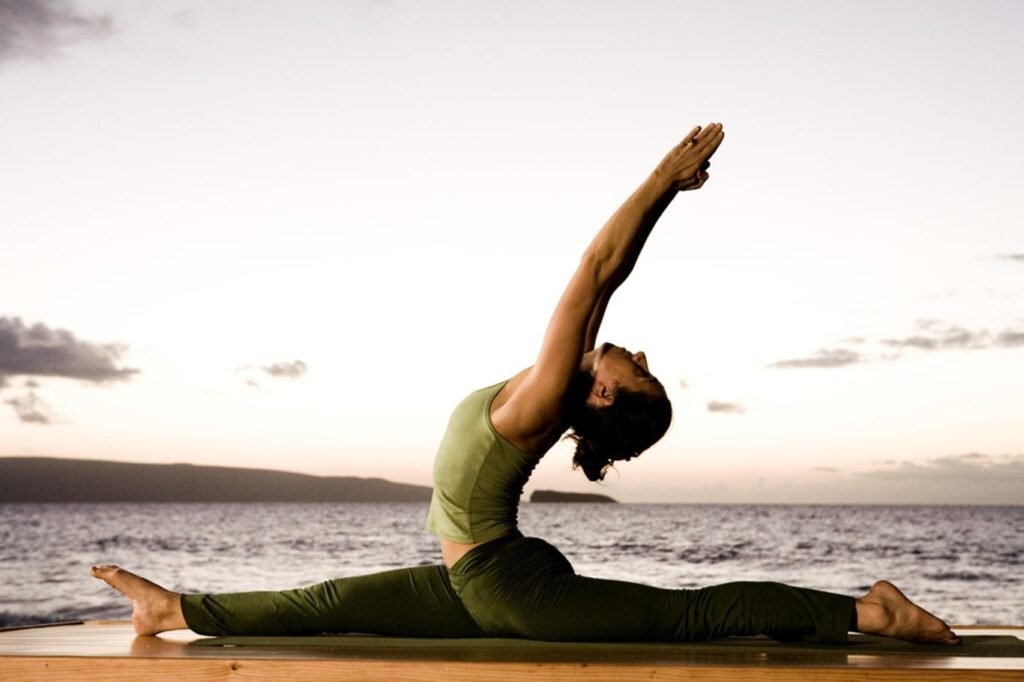
Practice
Practicing Pilates
Pilates can be practiced in a studio setting with an instructor or at home using online resources or DVDs. Here are some key aspects of Pilates practice:
1. Mat Pilates: This form of Pilates is performed on a mat and uses body weight as resistance. Common exercises include the Hundred, Roll-Up, and Teaser.
2. Reformer Pilates: This involves using a specialized piece of equipment called a Reformer, which uses springs and pulleys to provide resistance.
3. Frequency: For optimal results, it’s recommended to practice Pilates 2-3 times per week.
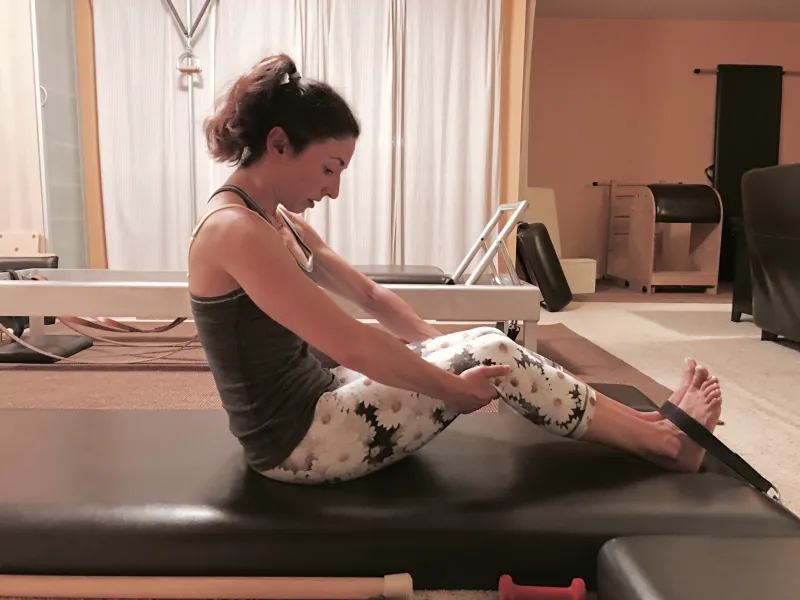
4. Duration: A typical Pilates session lasts between 45-60 minutes.
5. Proper Form: Maintaining proper form is crucial in Pilates to maximize benefits and prevent injury. It’s often beneficial to start with instructor-led classes before practicing on your own.
6. Breathing: Pilates emphasizes a specific breathing technique called lateral breathing, which helps engage the core muscles.
7. Progression: As you become more proficient, you can progress to more challenging exercises and increase the number of repetitions.
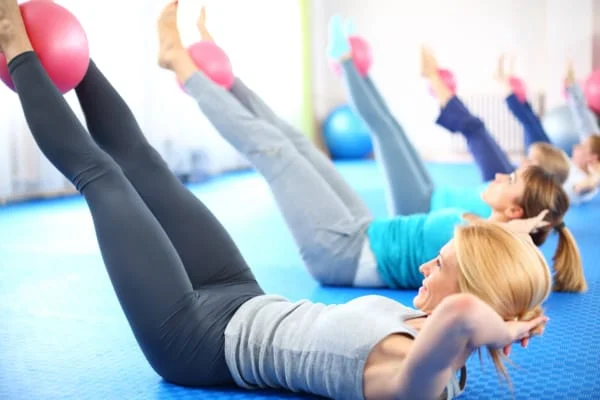
Practicing Yoga
Yoga can be practiced in a variety of settings, from yoga studios to home practice. Here are some key aspects of yoga practice:
1. Yoga Classes: Many people start their yoga journey with classes led by a yoga teacher. This helps ensure proper alignment and provides a supportive environment.
2. Home Practice: As you become more familiar with yoga, you may choose to practice at home using online resources or DVDs.
3. Frequency: The frequency of yoga practice can vary widely depending on individual goals and schedules. Some practice daily, while others may practice 2-3 times per week.
4. Duration: Yoga sessions can range from quick 15-minute practices to extended 90-minute classes.
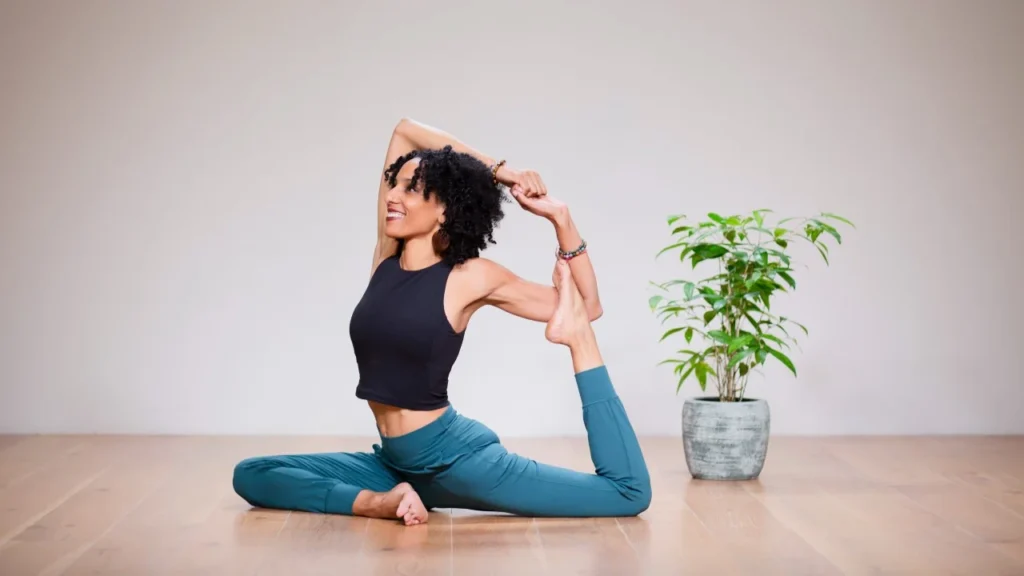
5. Props: Yoga props such as blocks, straps, and blankets can be used to modify poses and make them more accessible.
6. Breath Work: Breathing exercises, or pranayama, are an integral part of yoga practice and can be practiced separately or integrated into the physical practice.
7. Meditation: Many yoga practices incorporate meditation, either at the beginning or end of the session.
8. Styles: Experimenting with different styles of yoga can help you find the one that best suits your needs and preferences.
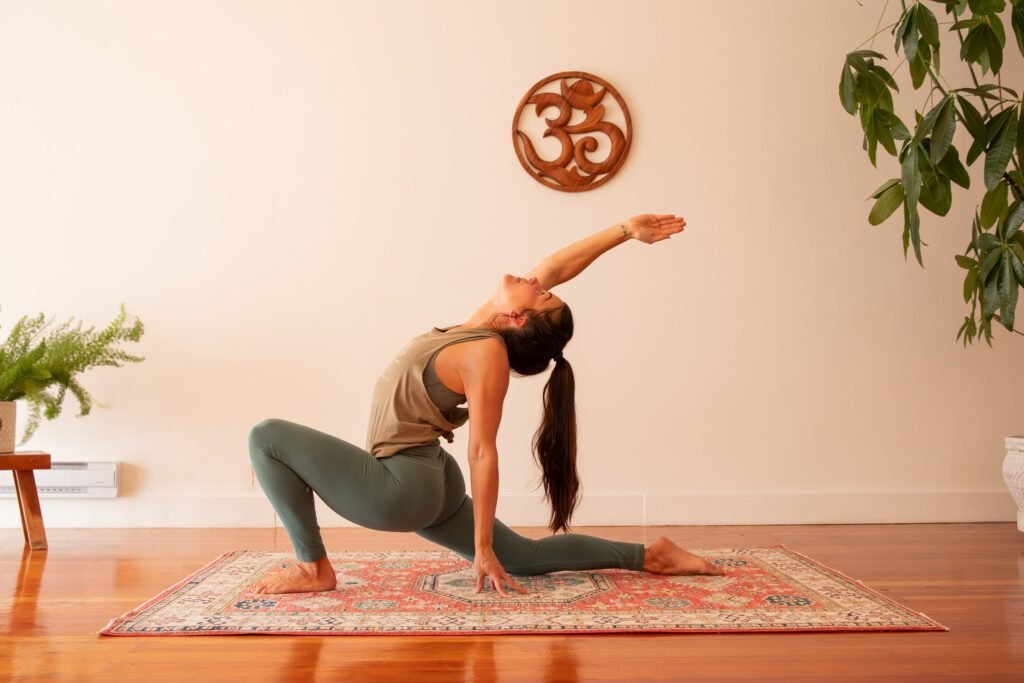
Choosing Between Pilates and Yoga
When deciding between Pilates and Yoga, consider the following factors:
1. Fitness Goals: If your primary goal is core strength and overall body toning, Pilates might be the better choice. If you’re looking for a practice that combines physical exercise with stress relief and spiritual elements, yoga might be more suitable.
2. Physical Condition: Both practices can be modified for different fitness levels, but if you have specific health concerns or injuries, consult with a healthcare professional to determine which practice is more appropriate.
3. Personal Preferences: Some people prefer the more structured, precise movements of Pilates, while others enjoy the flowing sequences and variety of yoga styles.
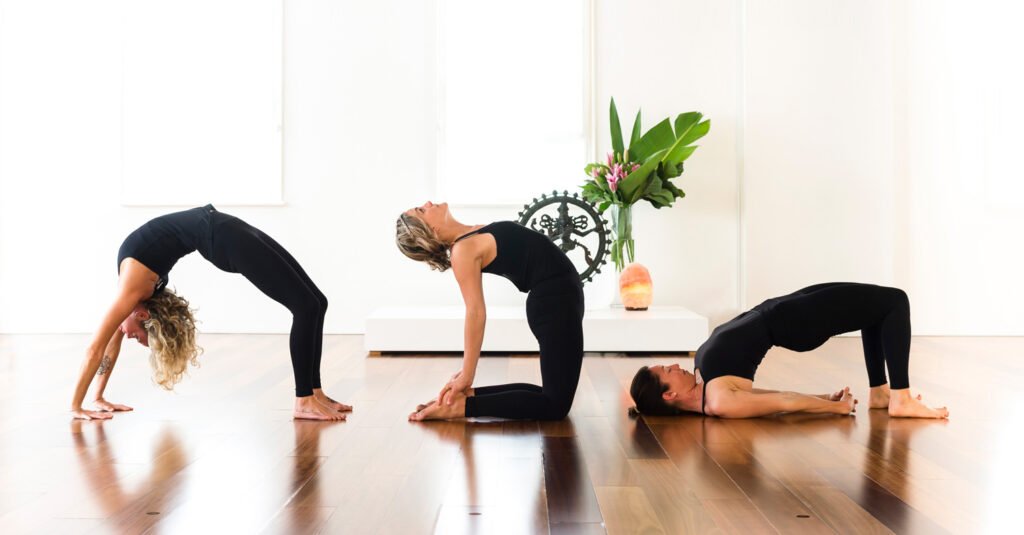
4. Time and Commitment: Consider how much time you can dedicate to practice and whether you prefer shorter, more intense workouts (like Pilates) or longer, more varied sessions (like some yoga classes).
5. Availability: Look into the classes and resources available in your area for both Pilates and yoga.
6. Mind-Body Connection: If you’re particularly interested in developing mindfulness and a deeper mind-body connection, yoga might be more aligned with your goals.
7. Variety: If you enjoy trying different styles and approaches, yoga offers a wider variety of practices to explore.
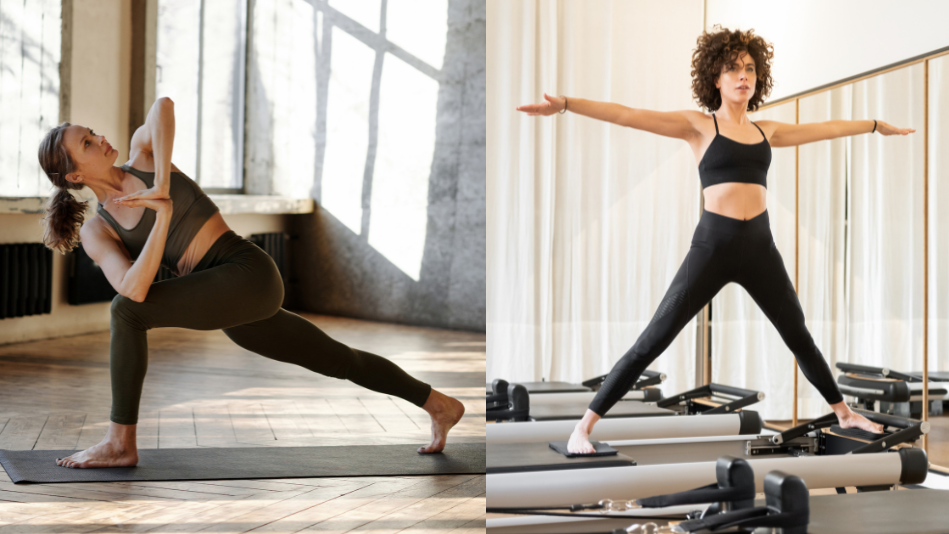
Conclusion
Both Pilates and Yoga are effective forms of exercise that offer numerous benefits for physical and mental health. While they share some similarities, such as a focus on breath work and body awareness, they have distinct differences in their origins, philosophies, and approaches. Pilates, developed by Joseph Pilates in the early 20th century, emphasizes core strength, posture, and controlled movements. It’s an excellent choice for those looking to improve overall strength, flexibility, and body awareness through low-impact workouts.

Yoga, an ancient practice originating in India, offers a holistic approach to wellness, combining physical postures with breathing techniques and meditation. It provides benefits ranging from improved flexibility and strength to stress relief and enhanced mental well-being. Ultimately, the choice between Pilates and Yoga – or whether to incorporate both into your fitness routine – depends on your personal goals, preferences, and physical condition.
Many people find that a combination of both practices provides a well-rounded approach to physical and mental wellness. Remember, the most effective exercise is the one you enjoy and can maintain consistently. Whether you choose Pilates, Yoga, or a combination of both, regular practice will lead to improved physical health, mental clarity, and overall well-being.

